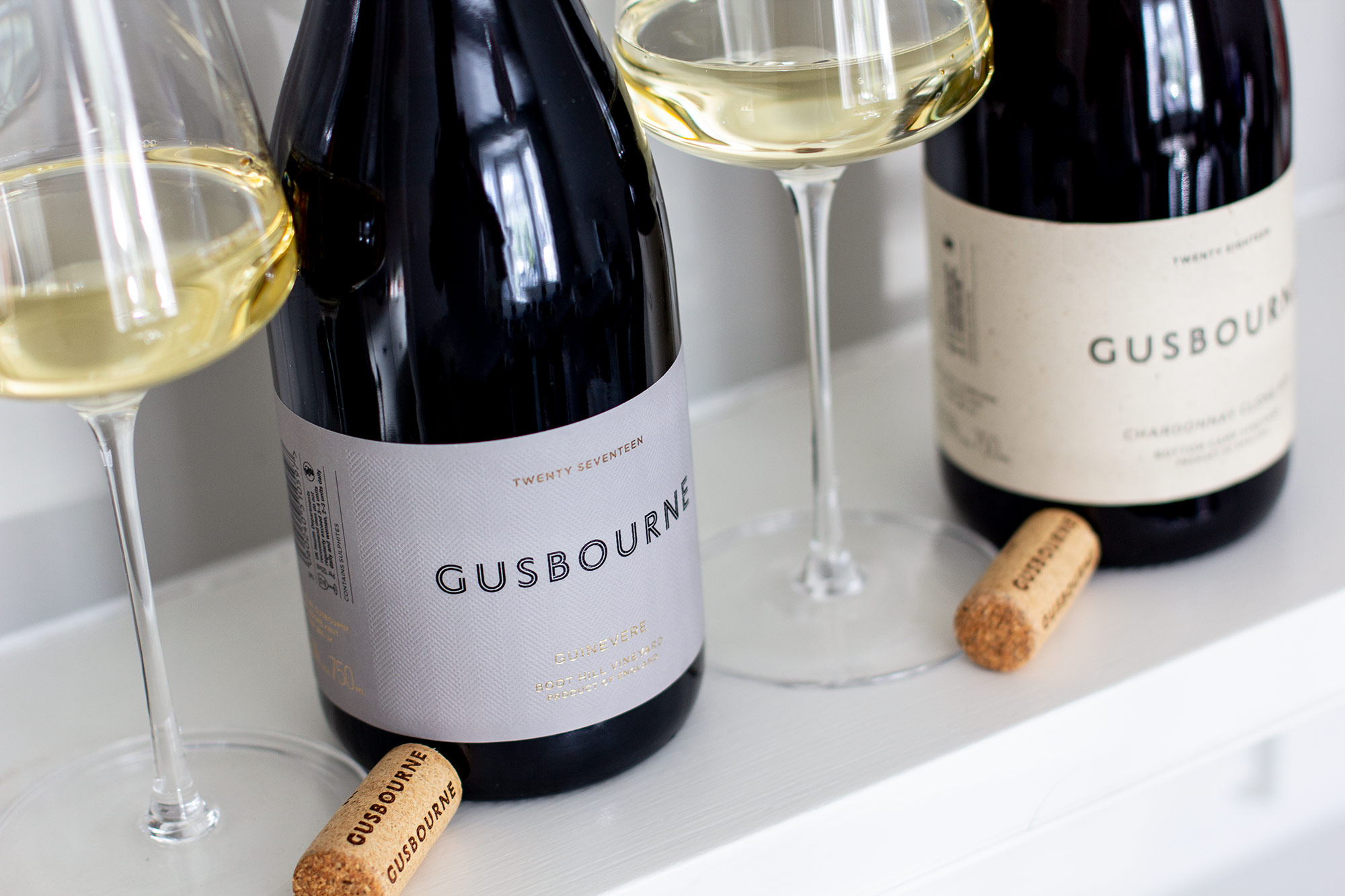
Having had the chance to explore some of the more profound intricacies of many English wines over the last couple of months during lockdown, I decided to start a series of short articles looking at pairs of iconic English wines that contrast in style. They may be two wines from a winemaker made from the same varietal but treated differently or two contrasting vintages.
First up, I have taken a look at Gusbourne’s still Chardonnay. Many will be familiar with their popular Guinevere Chardonnay, but less well known is the brand new Chardonnay Clone 809. The 809 is a very limited release that is made from a highly aromatic ‘musque’ clone.
This is the first time that Gusbourne have released a single clonal wine, and with such striking characteristics, it provides an exciting insight into just how different Chardonnay clones can taste and smell. Winemaker, Charlie Holland, explained to me that the clone was planted at Gusbourne with a view to continued experimentation. The initial idea was that the 2018 809 wine would be blended into the forthcoming Guinevere Chardonnay 2018, “however, we found it to be way over the top aromatically, which wouldn’t work in the Guinevere, so we bottled it separately”, Charlie added.
True to Charlie’s approach of taking care to accentuate each year’s characteristics, a 2019 vintage of the 809 Chardonnay clone is in the works. However, this second vintage was fermented in tank with a little skin contact and with less use of oak. I asked Charlie what other plans he had with clone 809 moving forwards. He commented, “we’ll play each vintage as it comes, but if we get the ripeness we may even try to make a sticky!”
The Guinevere 2017 is currently available from Gusbourne at £25.00, with the 2018 vintage due for release in September. The Chardonnay Clone 809 2018 has just been released this week at the same price, but is available in limited quantities at The Nest cellar door and to Gusbourne email subscribers. If you can track down a bottle or two, I highly recommend it!
Gusbourne Guinevere Twenty Seventeen
Grapes: Chardonay
This 2017 release is made from Chardonnay clones 548 and 95, harvested from the Appledore site. The wine was whole bunch pressed, fermented in barriques and then spent 10 months in French oak, 20% and 80% new.
This is one of the fullest, most luxurious Guineveres I’ve had from Gusbourne. It has a rich, appealing Burgundy-like nose of ripe peach, pear and apricot, partnered with buttered toast and hints of spiced nuts and ‘popcorn’ oak.
The palate on this 2017 is both ripe and generous on the stone fruit side, but also with that signature fresh acidity and zesty precision that Charlie Holland loves to demonstrate as a signature of English typicity. The use of oak is generous, imparting distinctive toasted oak and popcorn richness, but the aforementioned fruit supports it and surrounds it all. One for those who like their proudly oaked Chardonnay (I do), though I think it will be even better and potentially more integrated given a year or two more in the bottle.
Gusbourne Chardonnay Clone 809 Twenty Eighteen
Grapes: Chardonnay
This wine is made exclusively from Chardonnay clone 809, a highly aromatic ‘musque’ clone grown in Bottom Camp Vineyard in Appledore. Interestingly, the wine had very similar treatment in the winery, with the wine being whole bunch pressed, fermented in barriques and then spending 10 months in French oak, 20% and 80% new.
Aromatically, this wine is immediately different from the Guinevere, with a leaner, fresher nose of spring blossom, honeysuckle, white peach and zesty tropical fruit. It’s such a contrast that you almost forget that this is also Chardonnay; it’s quite Viognier-like.
The palate, too, is a marked departure from the usual Gusbourne still wine style of opulent, perfumed oak. Instead, there’s energetic, crystalline crispness and dynamic purity. With crunchy green fruit and tangy tangerine flavours, and waves of floral, aromatic delights, this is a real journey of a wine.
Even with all this going on, it’s Chardonnay at its core, with crisp orchard fruit and hints of white peach. The buttery, popcorned oak that the Guinevere had in spades is here too, but just a lot more subtle, allowing the aromatics and tingling minerality to really shine through.



